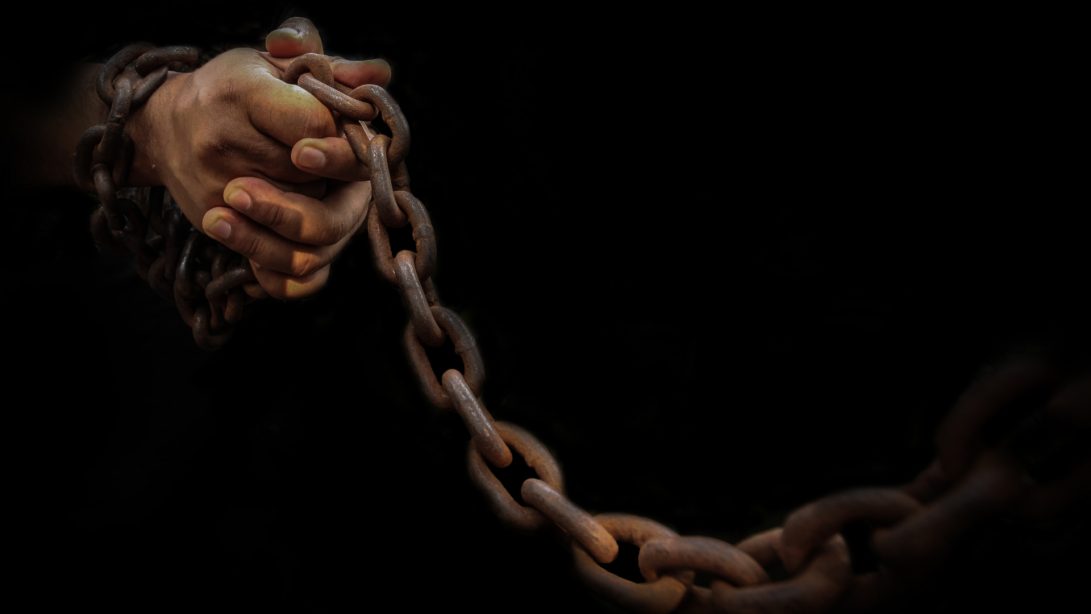English writer Samuel Johnson really pissed off our founding fathers in 1775 when he pointedly asked, “How is it that we hear the loudest yelps for liberty among the drivers of Negroes?”
Boo-yah!
Many of the men who would become known as our founding fathers were incensed at reading those words.
But why?
Surely, they understood the inherent hypocrisy of claiming to King George III “All men are created equal” and proclaiming to “Give me liberty or give me death” when all the while they are denying others their own liberty through slavery, right?
Well some of them did.
John Jay, one of our founding fathers wrote in response to so many of his contemporaries who were so outraged by Samuel Johnson’s dig, “To contend for liberty and to deny that blessing to others involves an inconsistency not to be excused.”
And for that response, John Jay is probably buried in an unmarked grave.
When one studies American history, it becomes painfully clear that objectivism has never been one of our strong suits.
I don’t know if it’s because of a human need to have someone be the “good guy” and to have someone to be the “bad guy”, but we Northerners have a tendency to view the people in the South as the “bad guys” and the people in the North as the “good guys” in regards to slavery in America.
And let’s be honest, Southerners aren’t doing themselves any favors when they insist on refereeing to the American Civil War as “the Act of Northern Aggression” but the reality is that not one of the original 13 colonies were unsoiled by slavery.
Slavery was banned in what was then known as the Northwest Territory in 1787 but it was alive and well prior to that. The states that were created from this piece of land were Ohio (1803), Indiana (1816), Illinois (1818), Michigan (1837), Wisconsin (1848) and Minnesota (1837). When these areas finally became official states, they did so as Free states.
It must be noted that even when banning slavery in the Northwest Territory they put into writing verbiage that said that if any slave were to escape “from whom labor or service is lawfully claimed in any one of the original States, such fugitive may be lawfully reclaimed and conveyed to the person claiming his or her labor or service as aforesaid.”
So making it north into a free state didn’t mean $@#7*.
But check this out, in order to maintain a “balance” of free and slave states in the interest of “political influence” the state of Kentucky was created by annexing part of Virginia in 1792 and Tennessee was created by doing the same thing to North Carolina in 1796. So at the same time that all of these Northern states are getting rid of slavery southern Aristocrats were busy trying to create new slave states to balance this all out.
If you remember from the last chapter on Sojourner Truth, you might’ve noticed that she was a slave not in South Carolina or Louisiana but in the state of New York. Sojourner Truth wasn’t living on a huge sprawling plantation in New York, she was living on a small farm. And remember her lover Robert? His master wasn’t even a farmer. He was a “landscape painter” by profession. Slavery did not end in the north before it did in the south because the north is where the “good guys” lived, not by a longshot. What ended slavery in the north had much more to do with climate, soil, geography and the like. Plus, the North had a steady stream of broke European immigrants that were coming here that the early Americans could put to work on the cheap. Those European immigrants rarely migrated south because all of those wealthy “job creators” gave all the work to their enslaved Africans. There were no jobs for a free, European immigrant to be had.
You also have to remember some crops grown in the south like tobacco and cotton were so labor-intensive that it was only profitable because of slave labor.
In short, although there was slavery in the north the economy in the north was not built on it. To paraphrase a former professor at Marygrove College the North could be thought of as a “society with slaves” as opposed to the South, which was a “slave society”.
Let me ask you a question. Do the names Macomb, Cass, Hamtramck, Dequindre, Groesbeck or Livernois mean anything to you?
Sure. They should. If you are from the Detroit area you know that these are the names of a county in Michigan, a city, and some of the most recognizable streets in the city of Detroit. Cass Tech is a famous high school in Detroit named after Lewis Cass, former Governor of Michigan when Michigan was still a territory, former US Senator, the 22nd Secretary of State of the United States and co-founder as well as the first Masonic Grand Master of the Grand Lodge of Michigan.
But Lewis Cass was also something else.
He was also a slave owner.
Yep. Macomb, Cass, Hamtramck, Dequindre, Groesbeck and Livernois were all the names of prominent and wealthy slave owning families right here in Detroit. In fact, at one point, in 1750, 25% of Detroiters were slave owners.
Detroit’s first mayor John R. Williams owned slaves. And now here in southeastern Michigan 10s of thousands of us drive down a road bearing his name daily beginning just north of 23 Mile (Avon Rd.) and continuing to downtown Detroit.
Even the Catholic Church in Detroit was heavily involved in slavery in Detroit. In the 1700s, the Catholic priests in Detroit owned slaves.
The men who funded the Detroit Free Press were all ex-slave owners, which is probably why the Detroit Free Press unwaveringly supported slavery before and during the American Civil War.
When William Macomb died in 1796, he died the wealthiest man in Detroit.
This man owned both Grosse Ile and Belle Isle, and several homes in Detroit but he also owned enslaved Africans.
In his will William Macomb wrote: “I give and bequeath to my loving wife, Mrs. Sarah Macomb, for her own use, all my moveable estate wheresoever…my slaves, cattle, household furniture, books, plates, linen, carriages and my utensils of husbandry.”
All in all William Macomb owned a few dozen enslaved Africans. That’s nothing in comparison to Thomas Jefferson who lived at the same time as William Macomb but owned over 600 slaves.
As we get into how enslaved Africans successfully made it to freedom by running North, it is important that you remember that these men and women were not running into the welcoming arms of people that were of some higher moral character than the men they were escaping from, as you will see.

